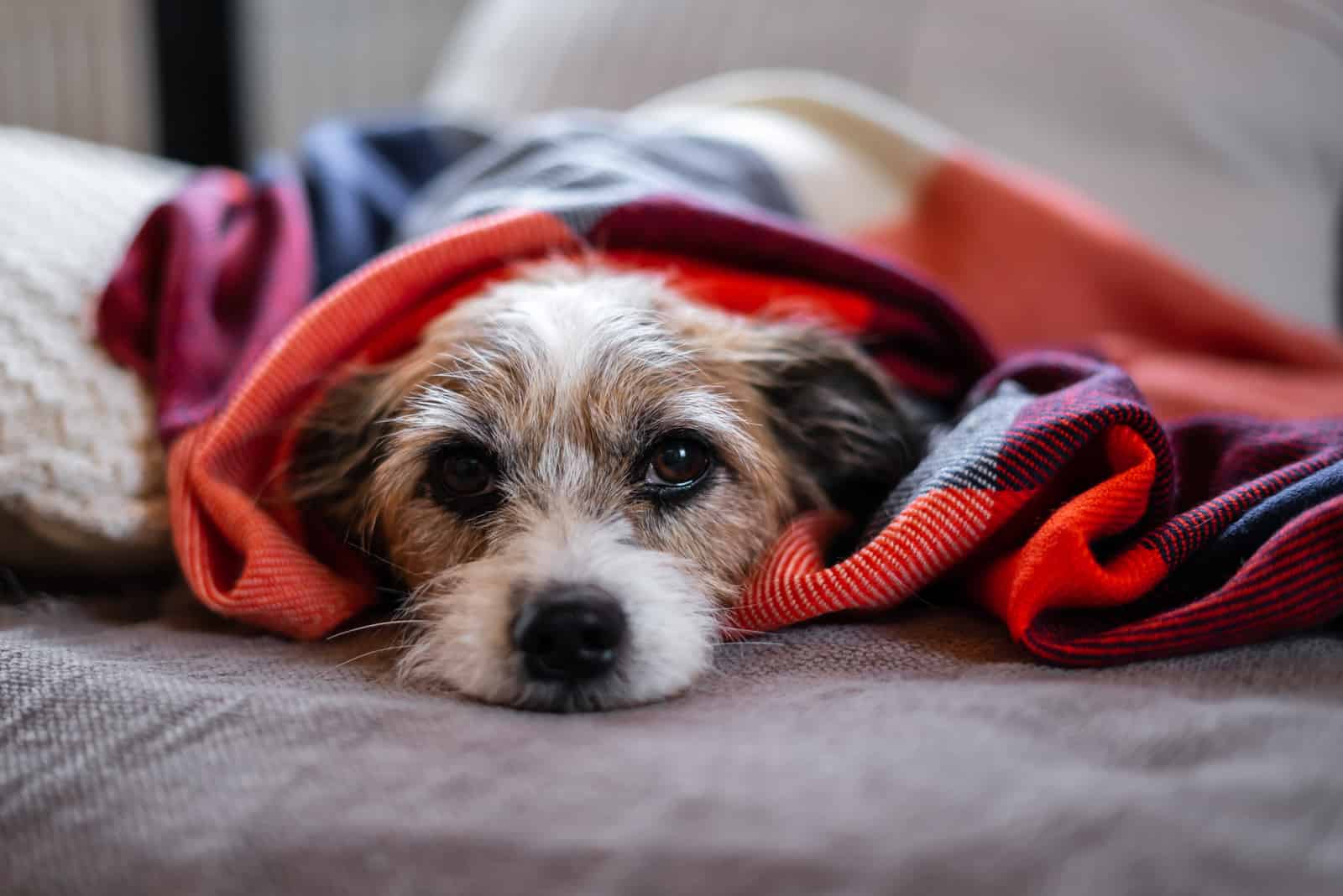How long can a dog go without pooping?
Well, that’s a question every pet owner might ask, but we all pray it never happens. Bowel movements are normal occurrences. There’s nothing funny about that, or God forbid, taboo. We all poop. Our dogs do it, too!
Still, problems with digestion can occur from time to time. Just remember the number of times you had to look for your causes of constipation or how many times you used a laxative! Probably a few times, but that’s more than enough.
Well, our canine buddies can have the same health problems that may cause problems with defecation. Frequent bowel movements are something we don’t appreciate enough. Once the problems start, and your pup goes days without pooping, you’ll remember this.
Establishing normal pooping habits is far more important than you think. If you find monitoring your dog’s bowel movements disgusting, then you shouldn’t bother getting a dog in the first place. You can learn a lot from a dog’s poop, and even notice signs of some medical conditions.
Let’s figure out what makes your dog skip pooping, how to help a constipated dog, and
How Long Can A Dog Go Without Pooping

There’s no precise answer on how long a dog can go without pooping. We can’t say it’s two, three, or more days precisely, but we do know that the further a dog goes without a bowel movement, the more problems he may be experiencing.
Dogs usually go potty once a day, but this still depends on their age. Puppies have a faster metabolism than adult or senior dogs. That’s why puppies poop a few times a day. Senior dogs usually experience a slower metabolism, which often results in constipation and additional weight.
If your dog goes without pooping for a day, you shouldn’t panic immediately. Watch his general behavior. Trust me… you’ll notice signs of, i.e., constipation or distress. If the lack of bowel movement continues for more than two days, then it’s alarming.
You should either contact your vet or try some home remedies. Remember, just because your dog can go without pooping doesn’t mean he should.
Emptying his bowels is just as important as breathing. A lack of bowel movement can have severe consequences for your dog’s health.
So, instead of wondering how long a dog can go without pooping, you better wonder what to do to make pooping easier for him. And, finding reasons and remedies for constipation is exactly what we’re going to do!
Why Isn’t My Dog Pooping?

Your dog not being able to poop can be a clear sign he’s experiencing certain health issues other than constipation.
Still, constipation is something that happens to dogs more than you think. It’s really not a big deal as long as you keep it under control.
No one forces you to go number two every day. As long as it’s of normal consistency, then it’s okay. Dogs can go potty with a pause day. This means your Fido might go potty on Monday, skip Tuesday, go again on Wednesday, and so on. This becomes a routine, and it’s not a warning sign as long as some symptoms aren’t present.
Those symptoms include straining while pooping, moving in circles for too long, trying to find a comfortable position, whining, etc.
Not all dogs play by the book. Each dog is an individual being. It’s absolutely normal to go even twice a day if the stool is normal and the dog appears to be normal, too.
There’s a whole science behind pooping, and if you dig deeper (pun intended), you’ll be quite surprised with what you’ll learn.
Your dog might skip poop day for the simplest of reasons. But, he might also skip it for more serious conditions.
The bottom line is you need to monitor your dog. You’ll know what’s normal for your dog and what’s not.
What Are The Results Of Your Dog Not Pooping For A While?
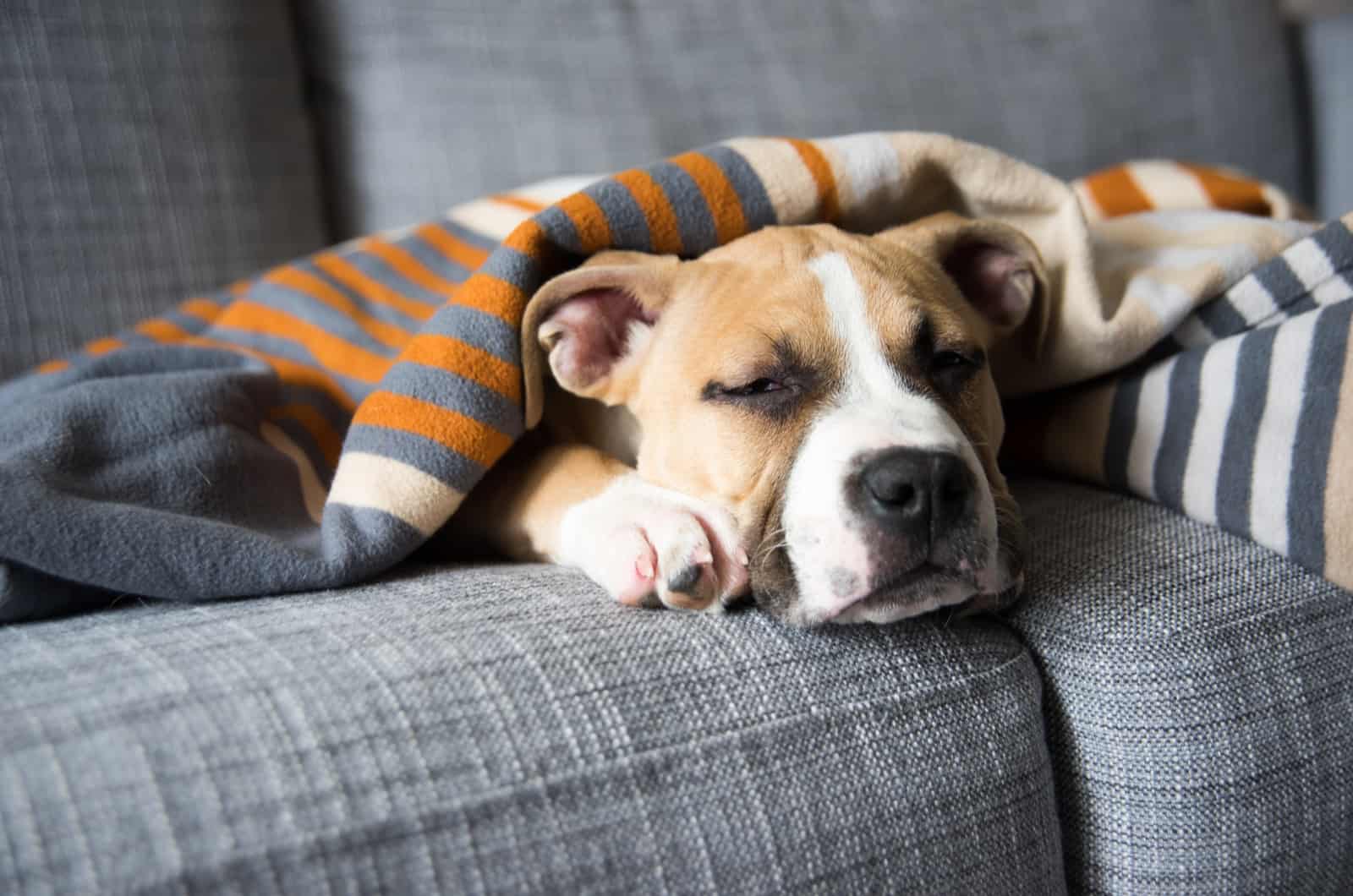
Trust me… you don’t want to lead your dog into that stage. But, I guess you do have to know what happens when things go too far.
Unfortunately, not pooping for a while can bring lots of severe issues. Your dog’s constipation can turn into obstipation. While regular constipation can be treated with medication at home or at the vet’s office, or by having a simple enema, obstipation is far more serious, and requires a special approach.
So, what exactly is obstipation?
Obstipation occurs when your dog is constipated for a while. Pardon my French, but your dog’s fecal matter gets stuck and dries out so it cannot pass through. This leads to the condition of a megacolon. Basically, your dog’s colon will increase in size and become swollen.
The obvious symptoms of megacolon, besides the absence of pooping, are lethargy, vomiting, lack of appetite, lack of energy, straining while trying to poop…
Unfortunately, a megacolon can’t be treated at home. Most likely, your dog will need surgery to have the blockage or the intestinal obstruction removed. Sometimes, vets perform manual removal of the feces, called de-obstipation.
However, de-obstipation is not harmless, and it can require other additional treatments and surgeries. Not only does it cost a lot of money, but it also puts your dog under too much stress and pain.
Now, do you realize how severe not pooping is?
What Are The Most Common Reasons Why My Dog Isn’t Pooping?
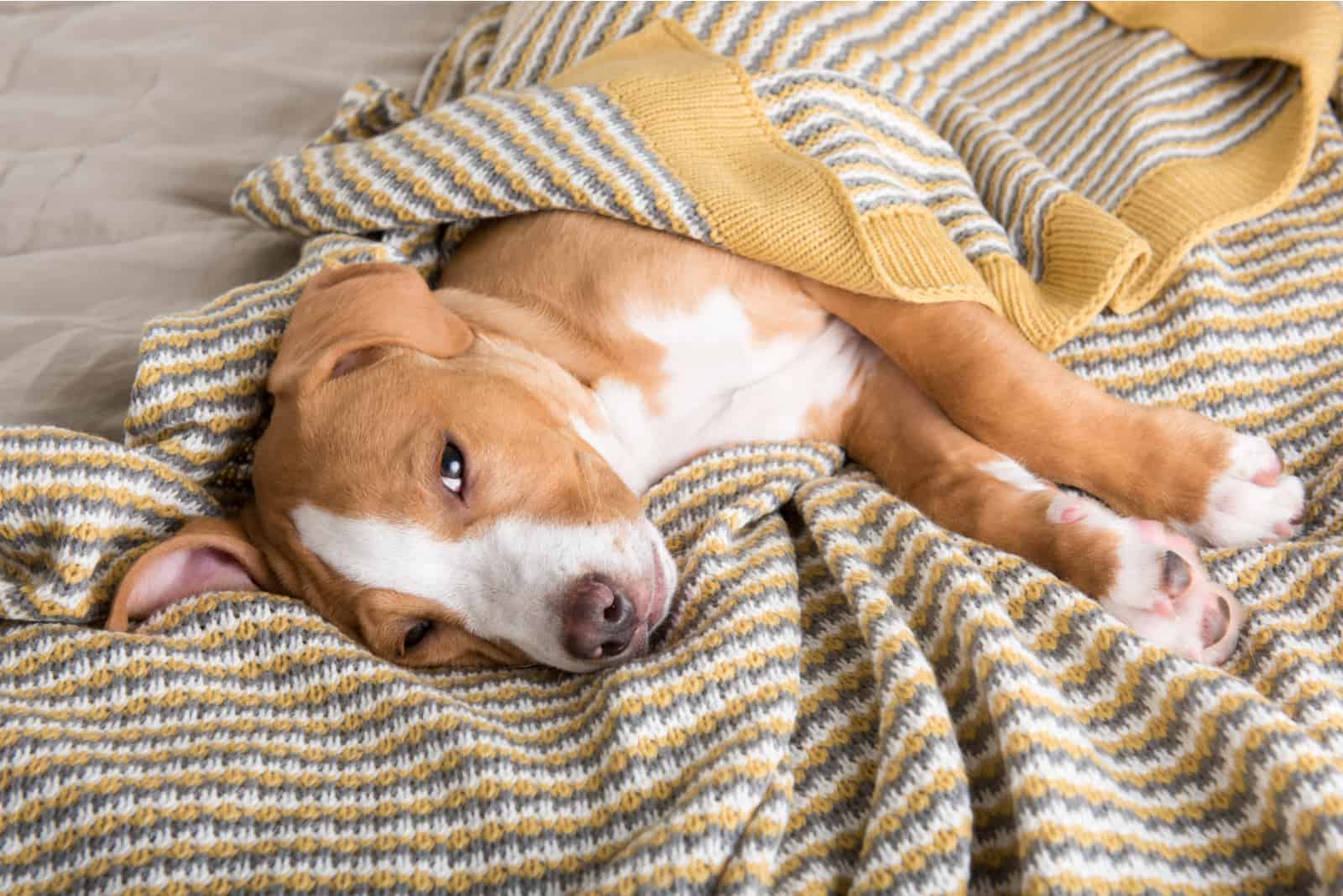
You’re about to learn what the most common reasons are as to why your dog isn’t pooping. Precisely, there are four of them, and they cover pretty much all situations as to why your dog’s poop is still not there.
They’re ranked from the least severe to the most severe ones, so let’s get started!
Change In Your Dog’s Diet
Even a subtle change in your dog’s diet can be a reason why your dog isn’t pooping.
Trace back your steps. Have you introduced a new treat into your dog’s diet? Have you fed him scraps off your table? You never know how your dog’s digestion might respond. In most cases, he will digest it right through. But, what if he doesn’t?
What if that tiny change caused a huge deal for your dog’s digestion?
Dogs have a pretty sensitive stomach. They can experience lots of problems with their digestive system such as vomiting, diarrhea, or constipation.
I recommend you don’t play with your dog’s stomach. If you want to introduce a new kibble brand, or switch from kibble to raw dog food, you should do it gradually. Switch a small amount of your dog’s current meal with the new food you want to introduce.
Increase the amount over time until you end up with a completely-switched meal.
This is the same way puppies get introduced to adult food.
Speaking of puppies, a lot of them experience lack of pooping during their transition time, so make the switch as slow as possible. Also, since puppies like to nibble on things, watch out so your pup doesn’t swallow a piece of a chew toy and get constipated, or steals some table scraps that weren’t meant for him.
If you’ve done everything by the book, and your dog is still not responding with poop, then it’s time to visit the vet. He’ll definitely prescribe you sensitive dog food made from special recipes.
Inactivity
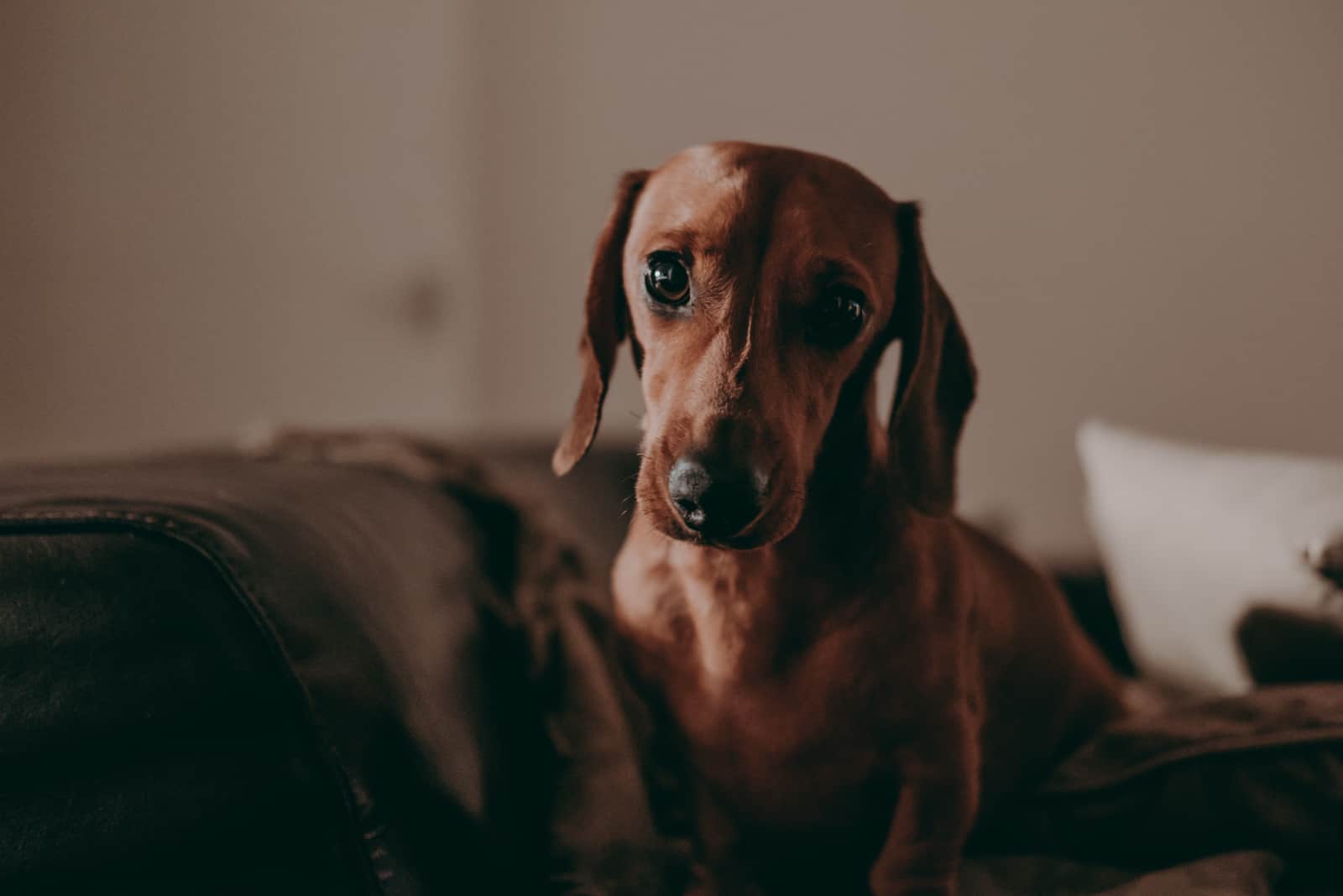
Believe it or not, dogs maintain their regular bowel movement with activity!
If a dog is too lazy, then his digestion will become lazy, and thus, his metabolism will slow down.
Dogs that have a slow metabolism are at the highest risk of becoming obese. Obesity brings along numerous issues – one of them being constipation.
Imagine you’re lying down all the time, and getting up just to eat. Of course, your bowels will become lazy! Of course, you will put on additional weight! And, of course, you will experience lots of issues regarding it.
Inactivity is not good for dogs. Even canines that shouldn’t exercise a lot still have their daily workout routines. Exercise can mean even the simplest walk in the park. As long as you and your dog take it regularly, there should be no issues with his weight or proper bowel movement.
Still, never forget about a balanced diet. Your Fido can exercise as much as he wants, but if the diet doesn’t suit him… you get it.
Physical activity stimulates the entire body, and gets it in good condition. It’s scientifically proven that working out releases hormones responsible for feeling well.
For example, a working dog breed like a German Shepherd would be thrilled to work out hard. He’s a happy doggo with a fast metabolism and a normal bowel movement. His bowls are nowhere near lazy.
Dehydration
Dehydration equals constipation. It’s as simple as that!
When a dog doesn’t have proper water intake for a while, that can result in severe constipation. However, this condition doesn’t happen overnight. It takes some time for a dog to avoid drinking water for constipation to occur.
Within just a few days, your dog can become all clogged up, without any other solution than visiting the vet. Adding more fibers, water, and probiotics don’t really help if the dog is severely dehydrated. There’s a full treatment that should be prescribed by the vet.
But, the biggest change regarding a dog’s water intake and dehydration should happen in the form of changing habits. Some dogs just don’t drink a lot of water. They’re usually smaller pooches. Bigger dogs exercise more, and drink water afterwards to make up for the lost water in their body.
Small pooches aren’t that active, and thus, don’t reach out for the water bowl too often.
As a dog owner and a pet parent, you should encourage your dog to drink a lot of water. If this has to mean you should bring him to the bowl yourself, then do it. It’s better to mildly force your dog into drinking fresh water than to risk dehydration.
Of course, don’t shove his muzzle into the water bowl. Just be casual about offering him the water bowl.
Health Issues
Certain health problems are definitely a cause for concern no matter how old your dog is or what his breed is. Some conditions have an impact on just one organ or organic system, while some affect the entire dog’s body.
A healthy dog is a happy dog… I always repeat that. But, how will your constipated dog be happy? He will be in pain and discomfort… that’s for sure.
Health problems that usually have constipation as a symptom include kidney problems like kidney failure, an enlarged prostate, rectum tumors anal gland tumors, urinary tract infection, hypothyroidism, etc.
All those conditions can either be life-threatening or can severely affect the dog’s life quality.
When Should I Alarm The Vet?
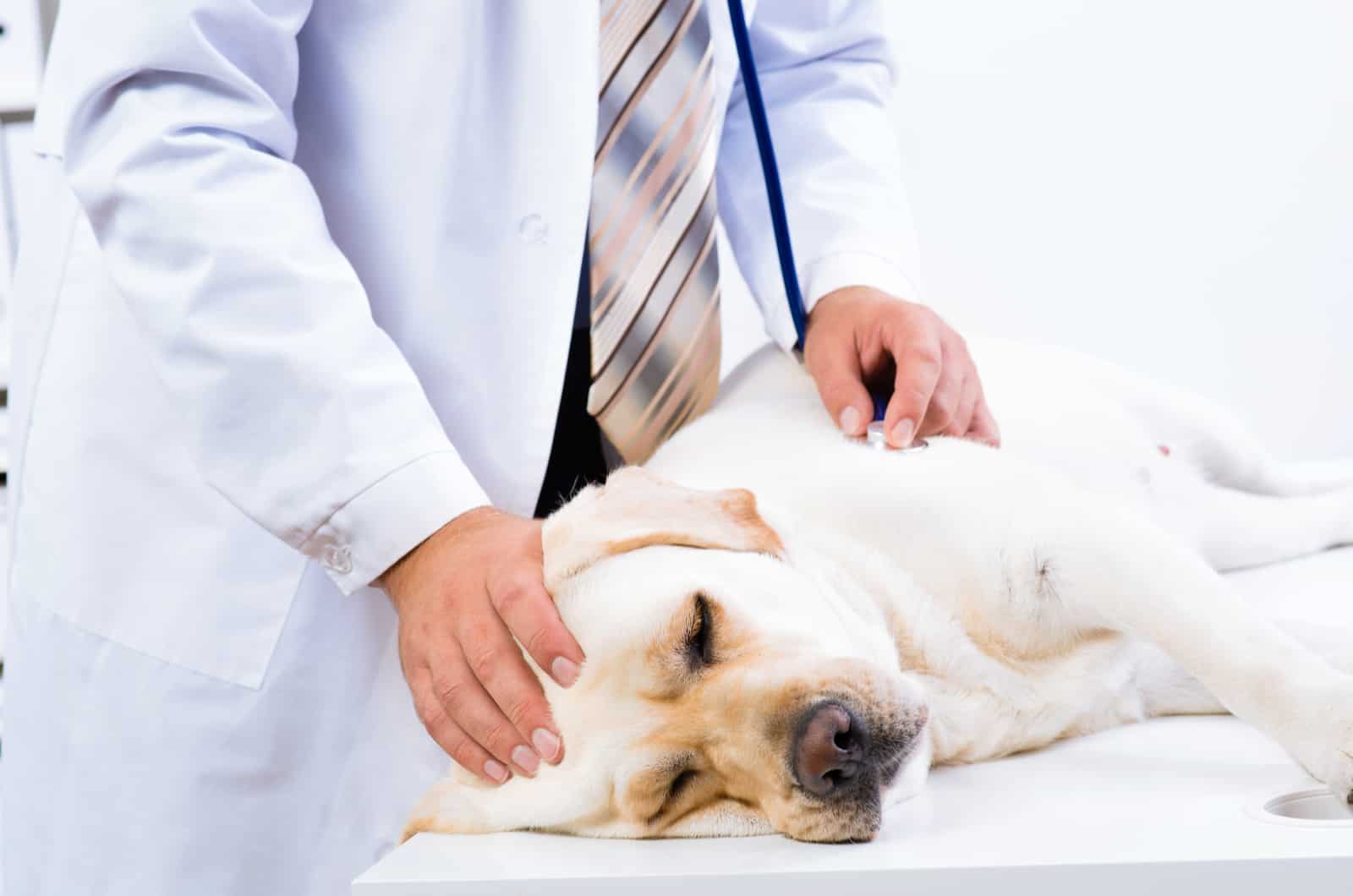
Don’t worry – it will be pretty clear to you when to alarm the vet. I understand that you’ll be hesitating to call him immediately when you notice the absence of poop, but resist that urge. Give your dog some time. Maybe it was just a rough day. Maybe that homemade doggy meal didn’t suit his tummy well.
These are all just maybes, but they can easily turn into warning signals.
You should alarm your DVM if other symptoms besides lack of bowel movement appear. The biggest red flags include a sudden change in behavior, high body temperature, lack of energy, drowsiness, vomiting or gagging without vomiting, etc.
Symptoms can also be restless behavior and zoomies around the house, but not the good ones. Your dog can be in such distress that he won’t know what to do with himself. He can feel lost and terrified of the reactions going on inside him.
Dogs can’t speak. Keeping an eye on these symptoms is how we learn what they want to say to us.
Once again, give your dog some time and space to relieve himself. If this situation stretches for more than two days, and it’s accompanied by other symptoms, get that phone and call your veterinarian!
How Much Water Should My Dog Drink Daily?
As you now realize, hydration is extremely important for your dog, so you should always make sure that fresh drinking water is available to your dog. It doesn’t have to be something fancy. Regular tap water or the water you’re drinking will do.
As long as your dog drinks an ounce of water per every pound of his weight, he should be fine.
Proper hydration is what keeps your dog away from severe conditions like constipation. Without water, your dog wouldn’t last for more than 24 hours. Some extreme cases might prove this wrong, but those aren’t good examples.
Never let your dog go for too long without water. It is more important than food.
A lack of appetite can be easily solved with some yummy treats or meal toppings, but you can’t shove your dog’s head into the water bowl.
Dehydration and overhydration are two different terms. It’s encouraging that your dog drinks lots of water, but he has to know where the limit is. Dogs that drink too much water can have problems with some organs, such as their pancreas.
Pancreatitis can have excessive water drinking as one of the symptoms, so watch out for this condition.
What Kind Of Dog Diet Stimulates Good Digestion?
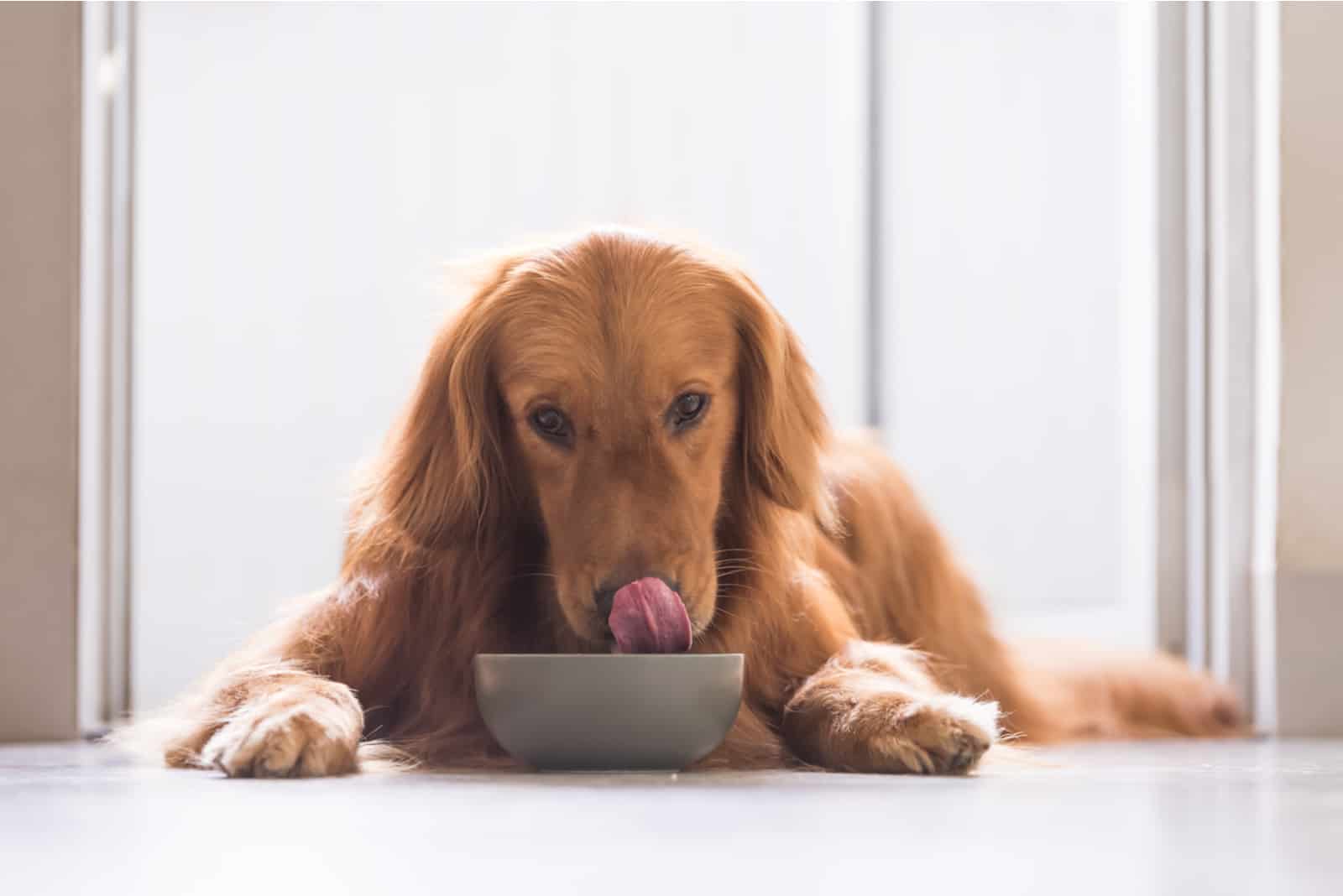
Dogs can consume three types of dog food: dry dog food (or kibble), wet canned food, and raw homemade food.
Or, they can enjoy the combination of either of them. But, if we had to pick… we’d go with wet food as one of the best stimulants for good bowel movement.
However, wet food should not be a permanent option for a lot of reasons mainly because it can do the opposite of what you were expecting. If you overfeed your dog wet food, he can end up having diarrhea, and it can seriously disturb his metabolism.
I suggest you combine wet food and dry food. Too much of something is never good.
Still, probably the best dog food that stimulates great digestion and affects overall life quality is raw, homemade food. The raw canine diet has been here since… forever! The first domestic dogs used to consume raw food consisting of grains, veggies, fruits, meat, and meaty bones.
No… those weren’t curated meals. It was a mash-up of everything their people back then had to offer. Dogs are omnivores, not just carnivores, so adding things besides meat to their diet is more helpful than you think.
A proper raw diet will offer your dog a healthy dose of fibers that will stimulate good bowel movement. In fact, it’s scientifically proven that dogs that consume raw-diet meals have better digestion and a better immune system, and seem to be generally healthier than their kibble buddies.
What Are The Best Home Remedies For Dog Constipation?
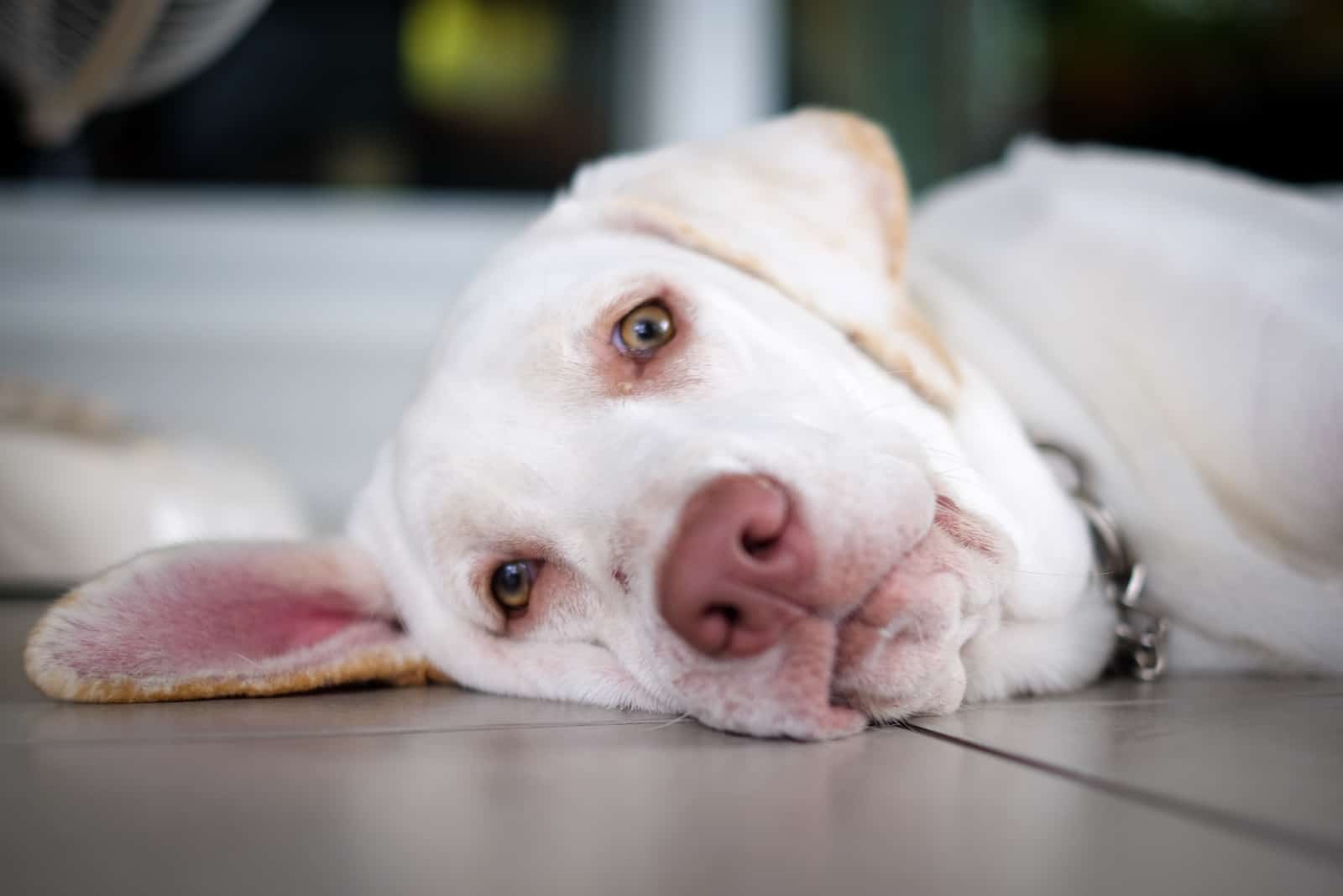
Lucky you! You get to treat canine constipation at home by using only a few nifty things.
Yes, that sounds like a blast. But, seriously… you can easily solve your dog’s constipation problem with some items you always have at home. Not only will these things solve the problem, but they will also offer other nutritional values to your dog.
How about we check out the top 5 best home remedies, so you don’t have to wonder how long a dog can go without pooping?
Pumpkin Puree
If you can’t find fresh pumpkin (which is pretty uncommon, but okay), you can use canned pumpkin puree. I always recommend you pick the most natural option you can.
Pumpkin is full of fibers that your dog needs for a regular stool. Adding pumpkin to your dog’s standard diet can only benefit your dog’s digestion. Also, pumpkin puree is full of vitamins A and B, as well as folate and manganese.
Not only will it help your dog poop, but it will also help build a strong immune system.
What you’re supposed to do with pumpkin is cook or bake it, and then use a blender to turn it into puree. Dogs love the texture of this puree because they can easily lick and swallow it. Also, pumpkin puree is naturally sweet and delicious, so there’s no way your pup won’t have it.
I do have to warn you about buying pumpkin puree with additional ingredients, such as sugar, or some spices like clove. Some of them can be pretty dangerous if consumed by your dog… even fatal in some cases!
So, it’s a big ‘no’ on feeding your dog pumpkin pie for the holidays.
Oils
Natural oils like olive or coconut oil are already known for their many benefits. They have a topical use, AND they can be safely consumed by dogs. How great is that?
I started adding olive oil to my dog’s diet the moment they came to me. They were still puppies transitioning from puppy food to adult food. Since I already decided I want to follow the BARF diet, olive oil was one of the main ingredients. A few drops really makes a difference!
My dogs never have issues with their coat or skin. They’re always shiny and smooth, and their skin is elastic.
However, when I adopted a slightly older puppy or a younger dog from a shelter, he came to me with constipation issues. Soon enough, I started him on BARF and changes were visible. His digestion became stable, and he never experienced any constipation issues again.
All thanks to the magic of olive oil!
If the situation is really that bad, and your vet gives you the green light, then you can give your dog a spoonful of olive oil. If he won’t swallow it easily, then a dropper or a syringe might help.
Still, don’t do this too often or you may cause more problems than those you already have.
Figs

Figs are one of those fruits your dog eats safely, without worrying if it’s healthy or not. Unlike some fruits and veggies that are strictly forbidden for dogs, figs are very welcome. They bring lots of fibers, which repair troublesome digestion almost immediately.
Dogs enjoy both the taste and the texture of figs. Still, I wouldn’t hand them out too often as they may cause a countereffect. Your dog should have one or two figs a week to help him maintain normal stool consistency.
Of course, I’m talking about fresh figs… not dried or fig sweets, such as Fig Newtons, as these should not be handed out to dogs.
Broth
Dogs love consuming broth, whether it’s mixed up with their kibble or included as part of their raw diet. No matter if it’s chicken broth or beef broth, dogs will love it. Personally, I prefer beef broth because of its higher nutrition value, and my dogs seem to agree with me.
But, nothing should be consumed in huge quantities, and neither should broth.
Serving your dog a bowl of broth and letting him slurp it throughout the day should help him poop again.
What I can advise you is to make your own broth because store-bought broth is full of sodium, and that can be bad for your buddy.
There are tons of easy broth recipes online, so you can go ahead and make them today.
Apple Cider Vinegar
Are you aware of how healthy apple cider vinegar is?
I bet you’ll even incorporate it into your own diet once you learn about the many benefits of it.
Apple cider vinegar is packed with antioxidants as well as vitamins. You should really consider giving your dog a bit once in a while.
In case of an emergency, your vet can advise you to either pour some vinegar into your dog’s water bowl, or give him a tablespoon straight down his throat. Don’t go overboard because dogs are only allowed one tablespoon of apple cider vinegar per every 50 pounds of their weight.
Too much apple cider vinegar can cause loose stools or severe intestinal damage. However, if you serve it responsibly, your dog’s tummy will calm down, and he should have a regular stool once again.
Also, apple cider vinegar does wonders for any hotspot in your dog’s body, along with reducing inflammation.
To Sum Up…
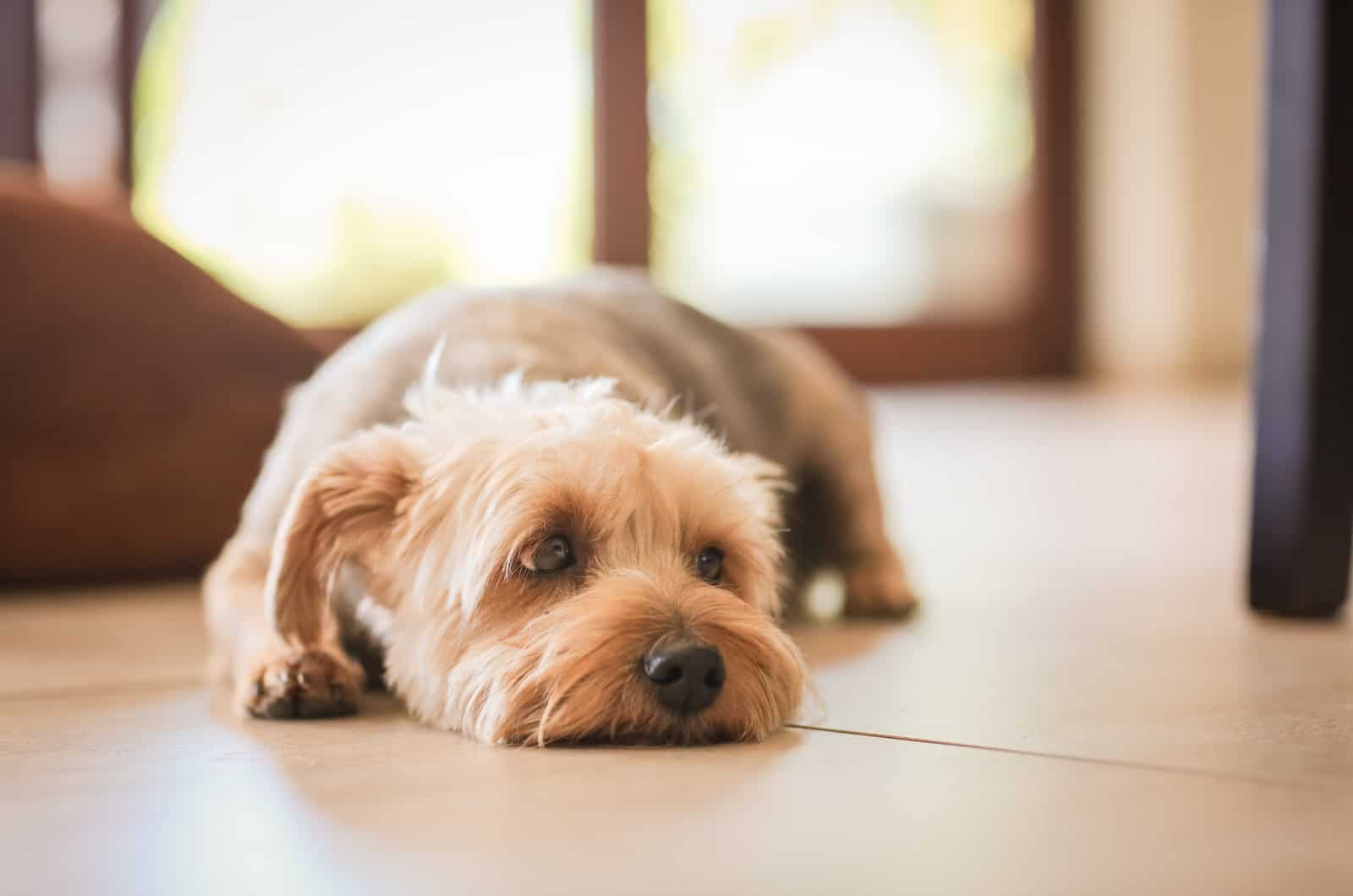
As you can see, you don’t have to wonder anymore about how long a dog can go without pooping.
The absence of a bowel movement is not something you should encourage or want for your dog. That’s a normal body function. We all poop. The problem is when we don’t do it.
It’s childish to avoid talking about dog poop. It’s not ridiculous. It can tell us a lot of things about our dogs. Constipation is not harmless. It can bring so many problems to your dog, and severely compromise his health.
That’s why every new dog owner should know how to spot constipation, and how to relieve it at home. Or, at least try to relieve it before the vet is available for consultation.
Your dog should take in enough water on a daily basis, and have a fiber-rich diet. If your dog is struggling with its digestive health, I recommend you introduce Metamucil – an over-the-counter laxative that might help with additional fibers.
It’s not okay for dogs to go for more than two days without pooping. If you notice him straining or avoiding going potty, you should introduce some stool softeners to his diet.
As you can see, there are tons of ways to help your dog have a normal bowel movement.
Normalize pooping! Normalize caring about whether Fido has gone or not. Everything our dog does can tell us a lot about what’s going on inside him.
Read More: How Long Can A Dog Go Without Eating? 7 Reasons And 8 Solutions
